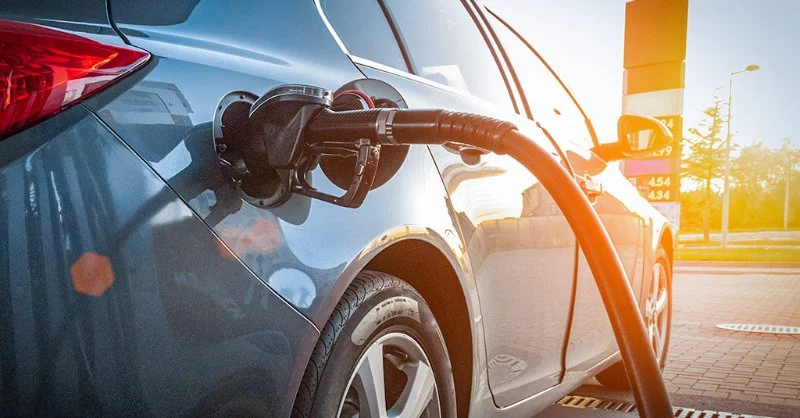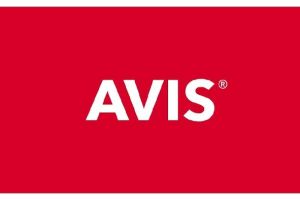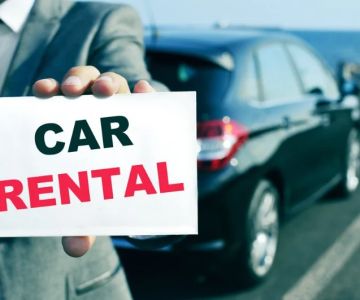
- 1-Understanding Rental Car Fuel Policies
- 2-Different Types of Rental Car Fuel Policies
- 3-How to Avoid Fuel-Related Charges
- 4-Tips for Renting a Car for Long Distance Trips
- 5-Real-Life Case Study: Navigating Fuel Policies on a Long Road Trip
1. Understanding Rental Car Fuel Policies
When renting a car, one of the key factors that can impact the overall cost of your trip is the rental car’s fuel policy. Rental car companies typically offer a variety of fuel policies, which can affect how much you end up paying for fuel at the end of your rental. Understanding these policies is crucial, especially when you’re planning to drive long distances, as fuel costs can add up quickly.
Each rental company has its own set of rules regarding fuel, and the terms can vary depending on the company and the location. In general, rental car fuel policies are designed to ensure that the vehicle is returned with the appropriate amount of fuel, but knowing how to navigate them will help you avoid unnecessary extra charges.
2. Different Types of Rental Car Fuel Policies
There are several types of fuel policies that rental car companies typically use. Understanding these will help you choose the best option for your long-distance trip and avoid unexpected costs.
2.1 Full-to-Full Policy
The full-to-full policy is one of the most common and straightforward fuel policies. Under this policy, you receive the rental car with a full tank of gas and are required to return it with a full tank as well. This is generally the most economical option, as you only pay for the fuel you use during your rental period.
The key here is to refuel the car before returning it. Make sure to plan for the extra time it takes to fill up the tank before returning the vehicle to avoid penalties.
2.2 Prepaid Fuel Policy
Under the prepaid fuel policy, you pay for a full tank of fuel at the beginning of the rental. The advantage of this option is convenience — you don’t have to worry about refueling the car before returning it. However, the downside is that you may end up paying for more fuel than you actually use. If you don’t drive far enough to empty the tank, you’re essentially paying for fuel you didn’t need.
2.3 Same-to-Same Policy
With the same-to-same policy, you’re asked to return the vehicle with the same amount of fuel it had when you picked it up. This policy is somewhat rare but can be found in certain locations. While it offers flexibility, it’s important to accurately gauge how much fuel you’ll need during your rental to avoid additional fuel charges.
2.4 Empty-to-Empty Policy
The empty-to-empty policy allows you to return the car with an empty tank, meaning you’re not required to fill it up before dropping it off. While this option might seem convenient, rental car companies often charge high fuel rates for refueling, so it’s generally not the most cost-effective option.
3. How to Avoid Fuel-Related Charges
Fuel-related charges can quickly inflate the cost of your rental car, so it’s important to follow a few simple tips to avoid paying extra for fuel. Here’s how to navigate rental car fuel policies and keep costs under control:
3.1 Plan Ahead and Refuel Before Returning
If you’re renting a car under a full-to-full policy, make sure to plan for a refuel before you return the vehicle. Search for a nearby gas station near the drop-off point to save time. Many rental car locations have gas stations nearby to make this process more convenient.
3.2 Be Aware of Prepaid Fuel Policy Costs
Before selecting a prepaid fuel policy, evaluate how much driving you plan to do. If you're driving long distances and know you’ll need a full tank, the prepaid option might make sense. However, if you're only driving short distances, you could end up paying for more fuel than necessary, so weigh the pros and cons before making your choice.
3.3 Keep Track of Fuel Consumption
Keep an eye on the fuel gauge during your trip. This can help you monitor how much fuel you’re using and prevent any surprises when it comes time to return the car. It’s a good idea to fill up when the tank reaches about a quarter full to avoid rushing to the gas station at the last minute.
4. Tips for Renting a Car for Long Distance Trips
When renting a car for a long road trip, there are a few extra considerations to keep in mind to make your experience smoother and more cost-effective. Here are some useful tips:
4.1 Choose the Right Vehicle
For long-distance trips, choose a car that is fuel-efficient and comfortable. Cars with higher fuel efficiency will save you money on gas, especially when covering long distances. Additionally, look for vehicles with ample trunk space for luggage and comfortable seating for those long hours on the road.
4.2 Avoid Unnecessary Charges
Check if your rental car comes with any extra charges for things like GPS, car seats, or additional drivers. If you don’t need these features, opt out to keep costs down. Additionally, confirm your rental company’s fuel policy and be sure to follow it to avoid any unnecessary charges.
4.3 Maintain the Car During Your Trip
Long trips can take a toll on your rental car, so it’s important to take good care of it. Check tire pressure, oil levels, and fluid levels during your journey. A well-maintained car can help you avoid breakdowns and ensure you don’t incur additional fees for damage when returning the vehicle.
5. Real-Life Case Study: Navigating Fuel Policies on a Long Road Trip
Let’s look at a real-life example of how understanding fuel policies can make a significant difference when renting a car for a long-distance trip:
5.1 Sarah's Road Trip Experience
Sarah and her family rented a car for a cross-country road trip. They chose the prepaid fuel policy for convenience, as they didn’t want to worry about refueling along the way. However, they ended up driving fewer miles than they expected, and they realized they had paid for more fuel than they used. In hindsight, they wished they had opted for the full-to-full policy, which would have been cheaper given their shorter driving distance.
This experience taught Sarah the importance of understanding fuel policies when renting a car for long trips. By carefully evaluating her needs and choosing the most cost-effective fuel option, Sarah could have saved money. It’s a good reminder to always consider your driving plans before making decisions about fuel options.









 ACE Rent A Car4.0 (2621 reviews)
ACE Rent A Car4.0 (2621 reviews) Avis Car Rental3.0 (83 reviews)
Avis Car Rental3.0 (83 reviews) Enterprise Rent-A-Car4.0 (257 reviews)
Enterprise Rent-A-Car4.0 (257 reviews) Strada Exotics5.0 (11 reviews)
Strada Exotics5.0 (11 reviews) Enterprise Rent-A-Car4.0 (323 reviews)
Enterprise Rent-A-Car4.0 (323 reviews) Avis Car Rental3.0 (79 reviews)
Avis Car Rental3.0 (79 reviews) What Every Traveler Should Know About Vehicle Type Upgrades
What Every Traveler Should Know About Vehicle Type Upgrades The Real Story Behind “No Deposit” Car Rental Deals
The Real Story Behind “No Deposit” Car Rental Deals Best Road Trip Routes in the U.S. Perfect for Rental Cars | LifeStar Car Rental
Best Road Trip Routes in the U.S. Perfect for Rental Cars | LifeStar Car Rental What Happens When You Return a Rental Car Without Refueling
What Happens When You Return a Rental Car Without Refueling Tips for Veteran Drivers Renting Cars After Military Service
Tips for Veteran Drivers Renting Cars After Military Service What U.S. Drivers Should Know About Insurance Deductibles on Rentals
What U.S. Drivers Should Know About Insurance Deductibles on Rentals